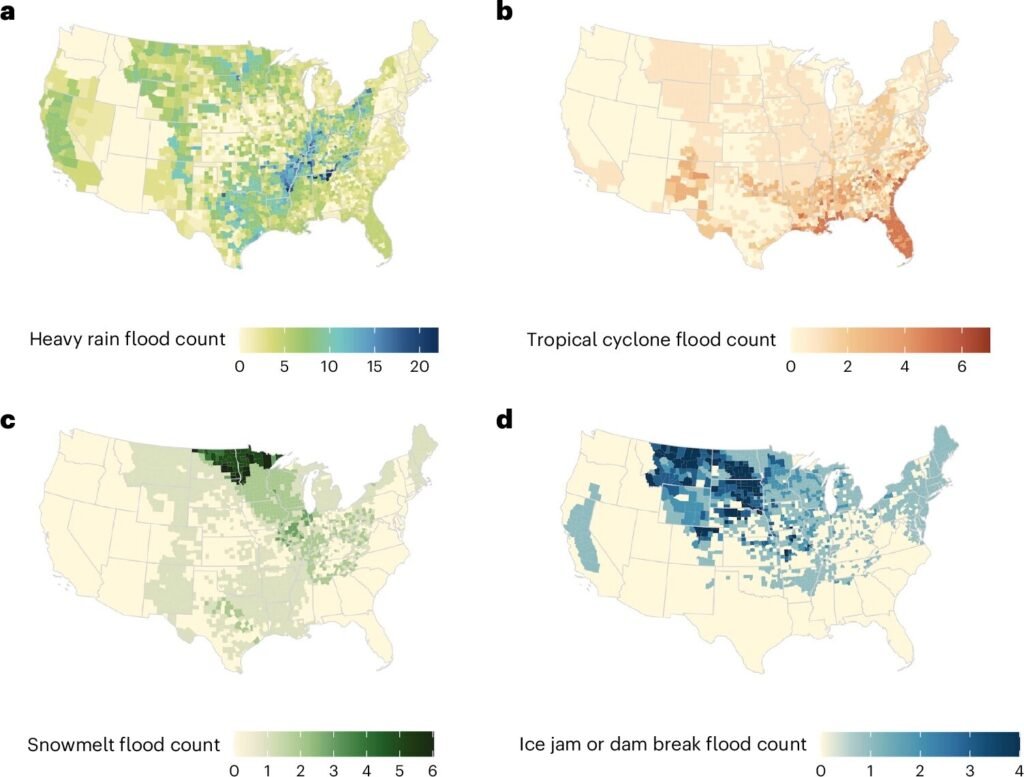A recent study published in Nature Medicine has shed light on the significant impact of floods on mortality rates in the United States. Over the past two decades, large floods have been linked to up to a 24.9% increase in death rates from major causes compared to normal conditions. The study, led by scientists at Columbia University Mailman School of Public Health in collaboration with researchers from Arizona State University, Harvard University, and the University of Arizona, highlights the hidden effects of floods, including those not related to hurricanes.
The research fills a crucial knowledge gap by examining cause-specific flood mortality risks over time and how these risks may vary among different population groups. The findings provide valuable insights that could help public health agencies allocate resources more effectively. With the projected increase in the population exposed to floods by 2050 due to factors like sea level rise and climate change, understanding the health impacts of floods is more important than ever.
Lead author Victoria Lynch, Ph.D., emphasizes the urgency of addressing flooding as a public health concern, stating that sea level rise, snowpack melting, and intensified storms will lead to more frequent and destructive flood events. The study reveals that floods are associated with higher death rates for various major causes, even in cases of rain- and snow-related floods that may not trigger immediate emergency responses.
Robbie M. Parks, senior author and assistant professor at Columbia Mailman School, highlights the significance of the study in enhancing our understanding of how floods impact mortality rates and improving resilience to climate-related disasters. By analyzing 35.6 million U.S. death records from 2001 to 2018, the researchers identified changes in death rates following large floods and their association with different flood causes.
Residents across 2,711 counties in the U.S. experienced at least one large flood during the study period, with heavy rain being the most common cause of such events. The study found that tropical storm/hurricane-related floods led to the highest increase in injury death rates among older individuals and females. Snowmelt-related floods were associated with higher death rates for respiratory diseases, neuropsychiatric conditions, and cardiovascular diseases.
The rise in infectious diseases following floods is attributed to disruptions in water and sewage infrastructure, while chronic and neuropsychiatric conditions may be linked to stress from flood-related disruptions. Socioeconomic factors, community vulnerability, and emergency response capabilities also play crucial roles in determining health outcomes in flood-affected areas.
The study underscores the importance of managing and adapting to floods caused by various factors, not just major events like hurricanes. By understanding the long-term health impacts of floods, communities can better prepare for and respond to these natural disasters. The research team’s previous work has also highlighted the health risks associated with tropical cyclones and the spread of waterborne infectious diseases.
In conclusion, the study provides valuable insights into the complex relationship between floods and mortality rates in the U.S. It serves as a critical foundation for improving public health preparedness and resilience in the face of climate-related disasters. By addressing the health impacts of floods, communities can better protect their residents and mitigate the adverse effects of these natural events.
For more information, the study titled “Large floods drive changes in cause-specific mortality in the United States” can be accessed in Nature Medicine (DOI: 10.1038/s41591-024-03358-z). The research was conducted by a team of scientists from Columbia University’s Mailman School of Public Health, Arizona State University, Harvard Chan School of Public Health, and the University of Arizona.


